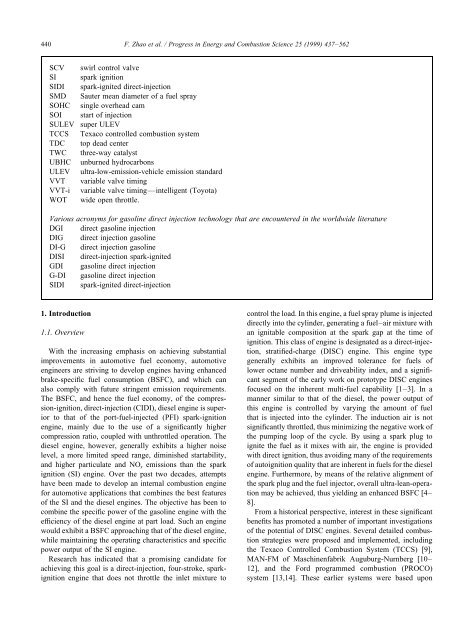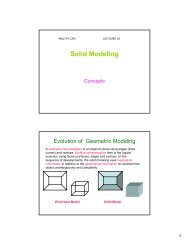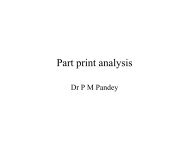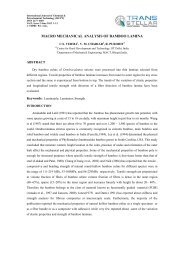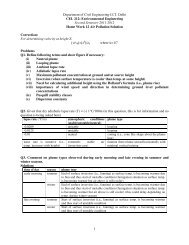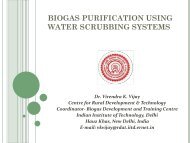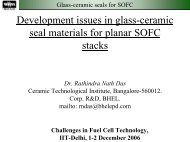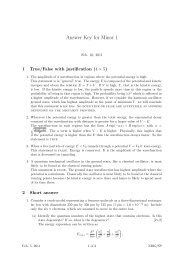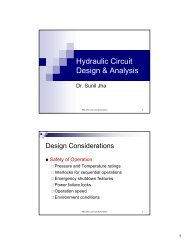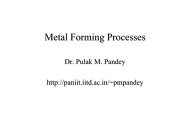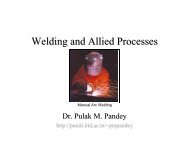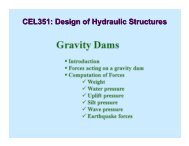Automotive spark-ignited direct-injection gasoline engines
Automotive spark-ignited direct-injection gasoline engines
Automotive spark-ignited direct-injection gasoline engines
You also want an ePaper? Increase the reach of your titles
YUMPU automatically turns print PDFs into web optimized ePapers that Google loves.
440<br />
1. Introduction<br />
1.1. Overview<br />
F. Zhao et al. / Progress in Energy and Combustion Science 25 (1999) 437–562<br />
SCV swirl control valve<br />
SI <strong>spark</strong> ignition<br />
SIDI <strong>spark</strong>-<strong>ignited</strong> <strong>direct</strong>-<strong>injection</strong><br />
SMD Sauter mean diameter of a fuel spray<br />
SOHC single overhead cam<br />
SOI start of <strong>injection</strong><br />
SULEV super ULEV<br />
TCCS Texaco controlled combustion system<br />
TDC top dead center<br />
TWC three-way catalyst<br />
UBHC unburned hydrocarbons<br />
ULEV ultra-low-emission-vehicle emission standard<br />
VVT variable valve timing<br />
VVT-i variable valve timing—intelligent (Toyota)<br />
WOT wide open throttle.<br />
Various acronyms for <strong>gasoline</strong> <strong>direct</strong> <strong>injection</strong> technology that are encountered in the worldwide literature<br />
DGI <strong>direct</strong> <strong>gasoline</strong> <strong>injection</strong><br />
DIG <strong>direct</strong> <strong>injection</strong> <strong>gasoline</strong><br />
DI-G <strong>direct</strong> <strong>injection</strong> <strong>gasoline</strong><br />
DISI <strong>direct</strong>-<strong>injection</strong> <strong>spark</strong>-<strong>ignited</strong><br />
GDI <strong>gasoline</strong> <strong>direct</strong> <strong>injection</strong><br />
G-DI <strong>gasoline</strong> <strong>direct</strong> <strong>injection</strong><br />
SIDI <strong>spark</strong>-<strong>ignited</strong> <strong>direct</strong>-<strong>injection</strong><br />
With the increasing emphasis on achieving substantial<br />
improvements in automotive fuel economy, automotive<br />
engineers are striving to develop <strong>engines</strong> having enhanced<br />
brake-specific fuel consumption (BSFC), and which can<br />
also comply with future stringent emission requirements.<br />
The BSFC, and hence the fuel economy, of the compression-ignition,<br />
<strong>direct</strong>-<strong>injection</strong> (CIDI), diesel engine is superior<br />
to that of the port-fuel-injected (PFI) <strong>spark</strong>-ignition<br />
engine, mainly due to the use of a significantly higher<br />
compression ratio, coupled with unthrottled operation. The<br />
diesel engine, however, generally exhibits a higher noise<br />
level, a more limited speed range, diminished startability,<br />
and higher particulate and NOx emissions than the <strong>spark</strong><br />
ignition (SI) engine. Over the past two decades, attempts<br />
have been made to develop an internal combustion engine<br />
for automotive applications that combines the best features<br />
of the SI and the diesel <strong>engines</strong>. The objective has been to<br />
combine the specific power of the <strong>gasoline</strong> engine with the<br />
efficiency of the diesel engine at part load. Such an engine<br />
would exhibit a BSFC approaching that of the diesel engine,<br />
while maintaining the operating characteristics and specific<br />
power output of the SI engine.<br />
Research has indicated that a promising candidate for<br />
achieving this goal is a <strong>direct</strong>-<strong>injection</strong>, four-stroke, <strong>spark</strong>ignition<br />
engine that does not throttle the inlet mixture to<br />
control the load. In this engine, a fuel spray plume is injected<br />
<strong>direct</strong>ly into the cylinder, generating a fuel–air mixture with<br />
an ignitable composition at the <strong>spark</strong> gap at the time of<br />
ignition. This class of engine is designated as a <strong>direct</strong>-<strong>injection</strong>,<br />
stratified-charge (DISC) engine. This engine type<br />
generally exhibits an improved tolerance for fuels of<br />
lower octane number and driveability index, and a significant<br />
segment of the early work on prototype DISC <strong>engines</strong><br />
focused on the inherent multi-fuel capability [1–3]. In a<br />
manner similar to that of the diesel, the power output of<br />
this engine is controlled by varying the amount of fuel<br />
that is injected into the cylinder. The induction air is not<br />
significantly throttled, thus minimizing the negative work of<br />
the pumping loop of the cycle. By using a <strong>spark</strong> plug to<br />
ignite the fuel as it mixes with air, the engine is provided<br />
with <strong>direct</strong> ignition, thus avoiding many of the requirements<br />
of autoignition quality that are inherent in fuels for the diesel<br />
engine. Furthermore, by means of the relative alignment of<br />
the <strong>spark</strong> plug and the fuel injector, overall ultra-lean-operation<br />
may be achieved, thus yielding an enhanced BSFC [4–<br />
8].<br />
From a historical perspective, interest in these significant<br />
benefits has promoted a number of important investigations<br />
of the potential of DISC <strong>engines</strong>. Several detailed combustion<br />
strategies were proposed and implemented, including<br />
the Texaco Controlled Combustion System (TCCS) [9],<br />
MAN-FM of Maschinenfabrik Auguburg-Nurnberg [10–<br />
12], and the Ford programmed combustion (PROCO)<br />
system [13,14]. These earlier systems were based upon


